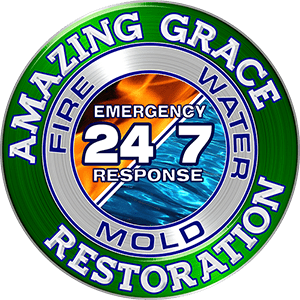Flooding is the savage kind of the acute weather believe it or not. It is significant to know what the flood is when talking about the flood. At first, we will define what is the flood. An overflow of water that engulfs land that is normally dry is called a flood. In the control of hydrology, floods are a place of study. They are general and universal natural acute weather events. Because flooding covers everything from some inches of water to multiple feet, floods can look very change. They can also proceed fastly and build slowly. We will discuss each type and the reason for the flood to better answer the question of “what is a flood”. Get in contact with an expert in Conway in case of any emergency.
Types Of Floods
There are five kinds of floods according to the person at the
National Severe Storm Laboratory. We will discuss the types of floods one by one.
1- Coastal Flood
2- Storm Surge
3- Flash Flood
4- River Flood
5- Inland Flooding
Coastal Flood
The overflow of common areas that are dry along the coast with seawater is called a coastal flood. The reason for the coastal flooding is normally a result of an amalgamation of the sea tidal streams, the pressure of the barometric, and storm. These situations normally come from big storms at sea like tsunamis, Tropical cyclones, and higher-than-normal-tides. For emergency water removal services, you can call professionals in Conway, Vilonia, and Morrilton. They will help you and properly guide you.
Storm Surge
Another type of flood is the storm surge which is mostly connected with coastal flooding. Now, we will define what is a storm surge. An unusual rise in the level of water in coastal areas over and above the normal gigantic tide is called a storm surge. Storm surge is always a result of climatological storms that cause bigger than usual tides on the seashore. This surge is produced by the three parts of a storm and these three parts of a storm are waves, wind, and low atmospheric pressure. If you want to learn about storm surges from one of the professional meteorologists you can contact experts in Conway, Vilonia, and Mayflower. They will properly tell you what you want to know.
The flooding storm surge is extremely alarming. At the same time, it can flood huge coastal areas. Because of this flooding can occur rapidly. When storm surge occurs as high tide at the same time extreme flooding happens. This can be the reason for storm tides to reach over 2 feet! Storm surge is the most alarming aspect of any tropical climate. Our meteorologists are always stressed because of the storm surge. It poses the most danger to both property and life. We have watched truly disastrous storm surge aspects in the past. During Hurricane Katrina, the storm surge took more than 1500 people’s lives.
Flash flood
Flash flood is the most harmful and famous type of flood. The flooding that starts within 6 hours, and mostly within 3 hours, of massive rainfall is called a flash flood. There are multiple reasons because of why flash floods occur. After heavy intense rainfall from acute thunderstorms over a small period mostly flash floods occur. To determine a flash flood there are normally two key elements which are rainfall time period and rainfall rate. When damns break flash floods also occur, or when levees fail, when an ice jam releases a huge amount of water then flash floods occur.
Risks of Flash Floods
In the united state flash flood is the number one acute weather, killer. It is very powerful. To roll boulders, destroy bridges and buildings, tear trees from the ground, and clean out new channels, flash floods have enough force. This kind of flood is identified by raging torrents, that rip through urban streets, river beds, and ravines removing out everything in their paths. Flash floods can wholly cover societies with heights reaching 30 feet. It can occur with little or no alarm this is another reason why flash flooding is more dangerous than all the other floods. In the case of a flash flood, you can contact experts in Conway, Vilonia, and Morrilton for the flood damage cleanup.
River Flood
When the water level rises over the top of the river banks a river flood happens. In all river and stream channels, river flooding can occur. From little streams to the world’s biggest rivers everything is included in it. For four reasons river flooding normally occurs. And these reasons are:
From tropical storm systems, immensely rain makes landfall
Determine rainfall over the same area for the increased time period
Ice jam
Combined snowmelt and rainfall
Suddenly or slowly river floods can occur. More frequently on a small river, rivers that flow for much of their lengths over water-proof terrain, rivers with Straight valleys, and generally dry channels sudden river flooding events happen. Low-rising river floods, on the other hand normally happen in large rivers with big drainage areas.
Inland Flooding
Another type of flood is inland flooding. Few organizations refer inland flooding to urban flooding. Flooding that happens inland or not in coastal areas is called inland flooding. Storm surges and coastal flooding are not inland floods. inland floods, rainfall is always to blame. Because of the rain inland flooding happens in two methods. It can occur because of the little and intense period of rainfall or it can occur with steady rainfall over many days. Because of the snowmelts inland flooding occurs, even though rainfall is a more general reason. When waterways get blocked by debris, dams or ice inland flooding happens.
In urban areas inland flooding is mostly worse because there is no anywhere for the water to go. The following urban circumstances can generate urban flooding or make inland flooding bad.
Uncovered streets and roads
Low-capacity drainage tools
Heavy buildings
Low amounts of green space

